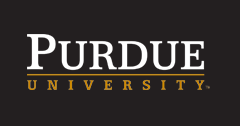Keywords
microfluidics, tissue engineering, biomedical engineering, tumor metastasis, cancer
Presentation Type
Poster
Research Abstract
Metastasis is one of the primary reasons for the high mortality rates in female patients diagnosed with breast cancer. It involves the migration of cancer cells into the circulatory system allowing for the dissemination of cancer cells in distal tissues. Understanding the major processes that occur in cells and tissues during metastasis can help improve currently existing therapeutic methods. In order to understand such mechanisms, developing physiologically relevant tissue models is crucial. Advancements in microfluidics have led to the fabrication of 3D culture models with shear stress gradients and flow control that can recapitulate aspects of the tumor microenvironment in vitro. However, most of these 3D culture models were fabricated using photolithography techniques performed in a clean room, which requires extensive training and can be cost prohibitive. Other studies have used more accessible techniques such as mold casting to construct a vessel-like microchannel. The main drawback of this method is that it limits the usage of high magnification objective lenses. Here, we propose a simple, high-fidelity and cost-effective approach in fabricating in vitro tissue platforms using a 3D printer that is optimal for live-cell imaging. To demonstrate proof-of-concept, we imaged endothelial and fibroblast cells cultured inside the 3D microfluidic collagen hydrogel, which was compared with the control group cultured in the 2D platform. The integrity of the microchannel fabricated inside the collagen hydrogel was imaged by using confocal reflectance microscopy. This feature has broader implications to bioengineered tissue fabrication and should be further explored in depth in the future.
Session Track
Biomedical Engineering
Recommended Citation
Anastasiia Vasiukhina, Brian H. Jun, Luis Solorio, and Pavlos P. Vlachos,
"Three-Dimensional Microfluidic Tumor Vascular Model for Investigating Breast Cancer Metastasis"
(August 3, 2017).
The Summer Undergraduate Research Fellowship (SURF) Symposium.
Paper 98.
https://docs.lib.purdue.edu/surf/2017/presentations/98
Three-Dimensional Microfluidic Tumor Vascular Model for Investigating Breast Cancer Metastasis
Metastasis is one of the primary reasons for the high mortality rates in female patients diagnosed with breast cancer. It involves the migration of cancer cells into the circulatory system allowing for the dissemination of cancer cells in distal tissues. Understanding the major processes that occur in cells and tissues during metastasis can help improve currently existing therapeutic methods. In order to understand such mechanisms, developing physiologically relevant tissue models is crucial. Advancements in microfluidics have led to the fabrication of 3D culture models with shear stress gradients and flow control that can recapitulate aspects of the tumor microenvironment in vitro. However, most of these 3D culture models were fabricated using photolithography techniques performed in a clean room, which requires extensive training and can be cost prohibitive. Other studies have used more accessible techniques such as mold casting to construct a vessel-like microchannel. The main drawback of this method is that it limits the usage of high magnification objective lenses. Here, we propose a simple, high-fidelity and cost-effective approach in fabricating in vitro tissue platforms using a 3D printer that is optimal for live-cell imaging. To demonstrate proof-of-concept, we imaged endothelial and fibroblast cells cultured inside the 3D microfluidic collagen hydrogel, which was compared with the control group cultured in the 2D platform. The integrity of the microchannel fabricated inside the collagen hydrogel was imaged by using confocal reflectance microscopy. This feature has broader implications to bioengineered tissue fabrication and should be further explored in depth in the future.

